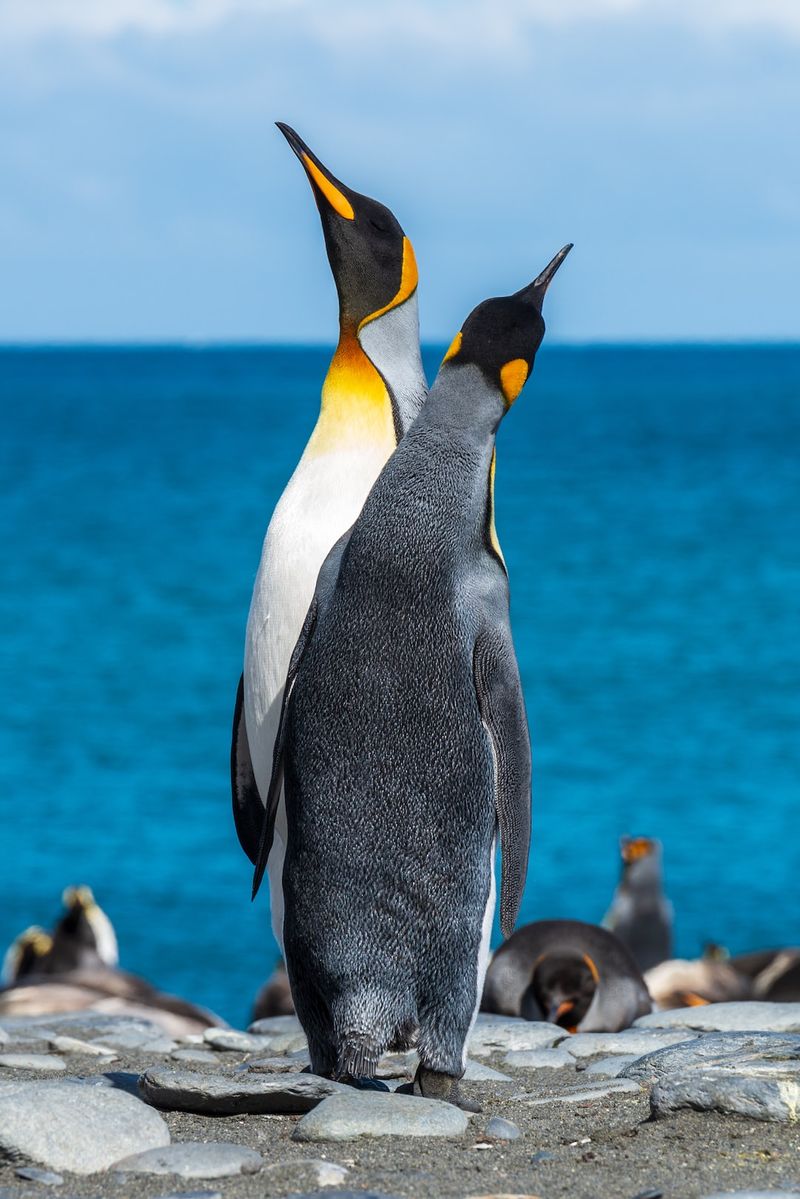Table of Contents
Seven Antarctic Facts That Will Fill You with Fear
The Eerie Antarctic Landscape
The Antarctic is a mysterious and eerie place, with its silent and unforgiving cold, the lowest temperatures on Earth, and no permanent human population. It’s no surprise that this stark landscape has been the backdrop for many horror movies, evoking a feeling of other-worldliness. However, amidst the fear, there are marvels in this icy realm that both frighten and inspire us to champion its protection.
The Antarctic Blood Falls
One of the most terrifying sights in Antarctica is the Taylor Glacier’s “Blood Falls.” The white snow that seeps with blood-red meltwater has puzzled scientists since its discovery in 1911. However, in 2017, researchers from the University of Alaska Fairbanks finally solved the mystery. The brine salt water flowing from the glacier contains iron, which, when it comes into contact with oxygen, oxidizes and gives the water its deep crimson color. It’s a hauntingly beautiful phenomenon that reminds us of the processes of nature.
Ocean Arachnids
If you suffer from arachnophobia, you might want to skip this part. Skittering around in the dark on the Antarctic ocean floor are sea spiders, which are actually marine arthropods. These creepy crawlies can grow up to 50 cm across in Antarctica, and they breathe through holes in their legs, making them even more peculiar. The presence of these sea spiders highlights the diversity and adaptability of life in the extreme conditions of the Antarctic.
The ‘Pyramid’ of the Antarctic
In 2016, a pyramid-shaped mountain in the Ellsworth mountains nearly broke the Internet. Speculations about an ancient civilization or alien construction surrounded this enigmatic structure. However, the truth is much simpler: experts concluded that the pyramid was a result of hundreds of millions of years of erosion, created by the forces of nature. This beautiful monolith represents the power and artistry of natural processes.
Watermelon Snow
The phenomenon of watermelon snow transforms parts of the Antarctic into life-sized, candy-colored ice. Though it may look tempting to eat, you wouldn’t want to do so. The snow gets its unique appearance from a cold-resistant microscopic algae called Chlamydomonas nivalis. As the ice warms during the Antarctic summer, the algae release red and green spores, resulting in an algal bloom that gives the snow its vibrant hue. However, it’s important to note that this snow is inedible and toxic to humans. The presence of such peculiar natural phenomena reminds us of the fragility and delicacy of the Antarctic ecosystem.
Sea Pigs
Somewhere between a Kraken and an axolotl, sea pigs can be found in the Antarctic. These scavengers play a crucial role in the ocean ecosystem by consuming nutrients from decomposing organisms and reintroducing them into the food chain when they get eaten. Though they may appear bizarre, these sea pigs are an example of nature’s effective recycling process.
Antarctic Graveyard
The Antarctic holds more than a few skeletons in its closet. Hidden beneath the snow on James Ross Island, scientists discovered almost a tonne of fossils, including those of a mosasaurus – a gigantic whale-like creature. While this discovery was extraordinary, it’s best to leave these ancient creatures to rest. The Antarctic’s mysterious past reminds us of the vastness and unknown history of our planet.
Singing Ice
Nothing could be creepier than the sound of the Antarctic’s singing ice. Accidentally discovered when scientists used seismic sensors on the Ross Ice Shelf, this inaudible sound to humans was detected in their recordings. Described as a doleful hum, the sound is created by the wind blowing across the coarse surface of the ice shelf. While it may send shivers down your spine, it serves as a reminder of the power and beauty of natural phenomena.
Protecting the Antarctic
An Urgent Call for Protection
The bone-chilling rarities that the Antarctic harbors highlight the need for its protection. As the effects of the climate crisis and destructive fishing industries take a toll on this delicate ecosystem, it is crucial that action is taken to preserve the unique Antarctic life forms. The Antarctic Ocean Commission holds the power to create ocean sanctuaries in Antarctic waters, and it must take the first steps towards protecting at least 30% of our oceans by 2030.
Preserving Nature’s Horrors
While the mysteries and terrors of the Antarctic may captivate our imagination, it is important that we understand the importance of preserving nature’s wonders. The Antarctic offers a glimpse into the resilience and adaptability of life in extreme conditions and acts as a barometer for the health of our planet. By protecting this remote and awe-inspiring region, we can ensure the continuity of its unique ecosystems and contribute to the broader goal of global environmental conservation.
Jeanette Meyer is a Global Digital Campaigner with Greenpeace’s Protect the Oceans campaign.

<< photo by Paul Carroll >>
The image is for illustrative purposes only and does not depict the actual situation.
You might want to read !
- Viet Nam’s Crackdown on Climate Activism: A Self-Inflicted Wound
- “The Global Epidemic Unveiled: Mapping State-Sanctioned Repression on Protesters”
- Setting the Truth Free: Exposing the Reality of Chechnya’s Anti-Gay Purge
- The Untold Stories: Voices of Resilience and Healing in West Darfur
- France’s Attack on Journalist Exposes Pattern of Complicity in Human Rights Abuses
- Crisis Brewing: Saudi Crown Prince’s Harsh Response to Tweets
- The Criminalization of Environmental Defenders in Mexico: Suppressing the Right to Protest
- Russia’s Cluster Munition Denial: Unmasking the Truth